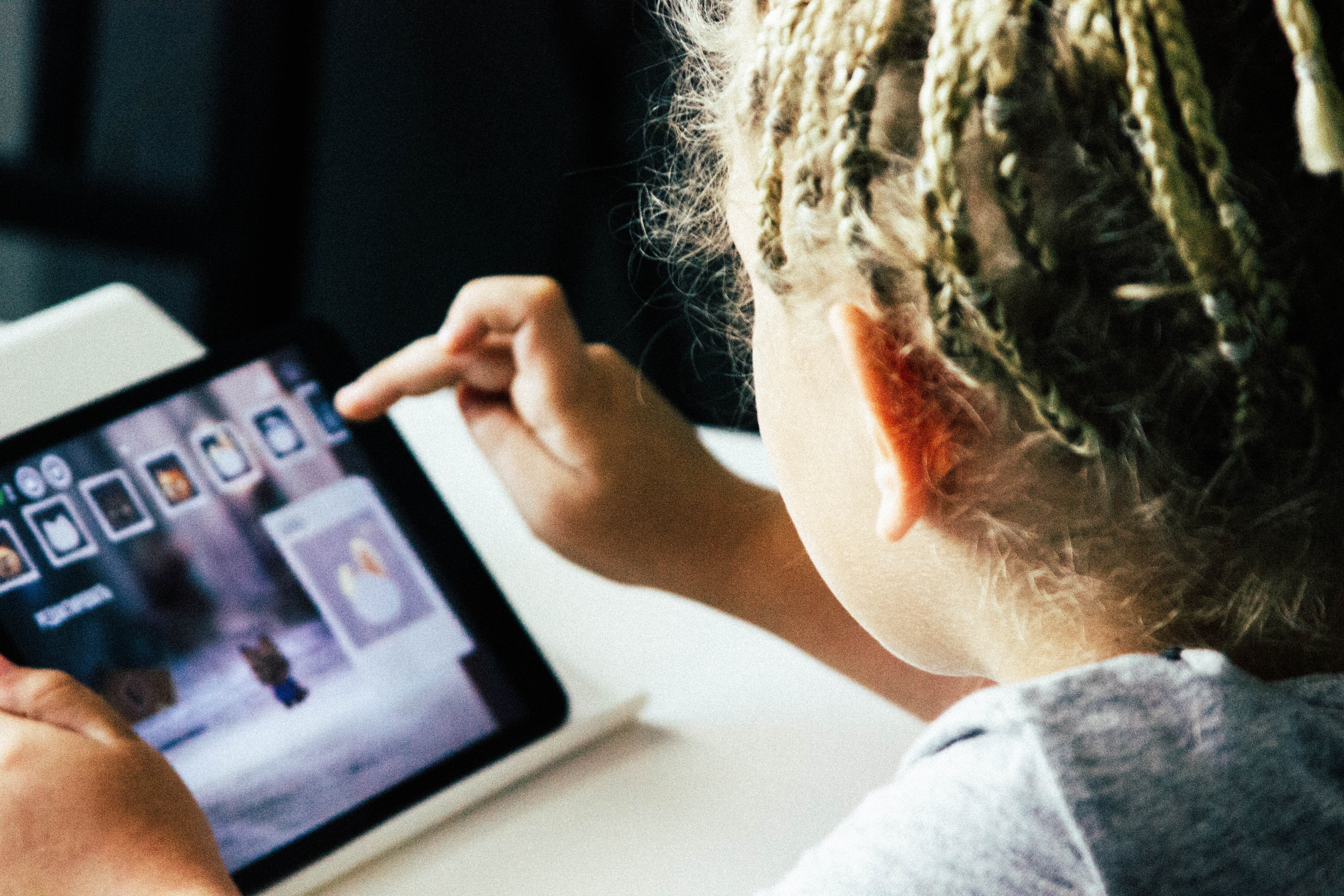This year, on the occasion of World Children’s Day, we wanted to cover the pressing topic, which is made more relevant for parents because of the COVID-19 pandemic. In the previous blog, Dobrinka Kuzmanović, doctor of psychology and co-author of the “EU Kids online“ study, shared the conclusions pertaining to the quantity of time spent in front of screens during early development, and now she will share 10 tips for parents to improve the quality of a child’s screen time.
Considering the fact that today’s children are ‘immersed’ in digital technology from the earliest age and they use it in different places and for different purposes (e.g. for studying, play, entertainment, communication), two factions arise: is it even possible to measure how much time your child spends in front of the screen and how to limit that time. In the author’s opinion, time in front of a screen, in the sense of of time spent, became a pointless and problematic concept.
Experts do not agree about the view that time spent in front of screens harms children’s development and that digital devices need to be prohibited. Actually, there are two directions: one (A. Przybylski, University of Oxford) which claims that there currently isn’t unambiguous scientific evidence to support limiting the time spent in front of screens, that the prohibition of use will not protect children from harmful contacts, digital violence and other risks, but that it will instead prevent them from gaining the important skills of digital literacy and becoming resistant to risks in a digital environment. On the other hand, some authors (e.g .J. M. Twenge, San Diego State University) believe that time spent in front of screens has a causal link to worse psychological well-being of children, poorer mental health and problems outside of the digital environment.

Get familiar with the guidelines of experts on the recommended time in front of screens, but make sure that the child’s well-being comes first
Today, however, what is becoming louder and louder is the understanding that the QUALITY of a child’s screen time is of crucial importance not the quantity of time.
Time spent in front of screens is, by itself, neither good nor bad!
The most important thing is what children are doing on digital devices, what purposes do they use them for, what kind of content do they access (are they appropriate for their age and developmental needs), how involved are parents/caretakers in the activities of children, are there jointly defined rules on using screens and are they being respected consistently, are experiences acquired during use of digital devices connected with the children’s experiences in other contexts…
What can you do, if you’re a parent of a pre-school or young school-age child, to improve the quality of time the child spends in front of a screen?
- Actively participate in activities of children on digital devices, play, learn and talk to children before, during and after use of screens, support them in becoming digital content creators, not just consumers.
- Listen to the needs and interests of your child, choose quality content, mind whether the content is appropriate for their age, always check the PEGI label on videogames played by your child.
- Get familiar with digital content before showing it to children, because content meant exclusively for children often contain something that is not appropriate for their age (e.g. at Disney’s Olaf’s Adventures, one click on a shiny cake, which is not marked as a store, will bring the child to a store)
- Use platforms (eg. YouTubeKids) and web browsers intended solely for children (e.g. Kiddle; Swiggle; Safe Search Kids; Kids Search)
- Use technical protection measures, so-called parental control, especially when it comes to younger children, in order to make the digital environment safer for the child.

What is becoming louder and louder is the understanding that the QUALITY of a child’s screen time is of crucial importance not the quantity of time.
- In cooperation with children, create rules and a plan for using digital devices, try to adhere to them consistently, but not at all cost. Experts and creators of the aforementioned guidelines believe that it is necessary to acknowledge the context, such as the pandemic, and not insist on strict adherence to rules, but on the general well-being of the child.
- Pay attention to the signs of too much use of screens: the child spends more and more time in front of the screen, is tired, has headaches, sleep problems, eyesight problems, does not practice personal hygiene, is isolated and withdrawn, spends less and less time in contact with people live (with friends and family members), worse grades at school, changes in behavior (anxiety and irritability), complains and gets angry when they are not allowed to use digital devices, is obsessed with certain activities and content…
- Learn about potential risks in the digital environment, but focus on positive aspects and opportunities that technology offers to children.
- Improve your own digital literacy, manage your time in front of the screen, because your own behavior shapes the children’s behavior the most.
- Get familiar with the guidelines of experts on recommended time in front of screens, but make sure that the child’s well-being comes first: too much or too little is what is too much or too little for your child!

















